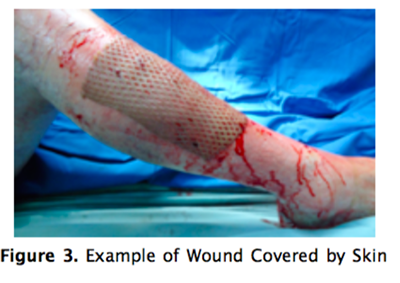Early Excision And Skin Allograft Helps To Control Infection In Major Burn At Burn Unit Cipto Mangunkusumo Hospital
DOI:
https://doi.org/10.14228/jpr.v1i5.109Abstract
Backgrounds: Burns are systemic complex injuries following an exposure to thermal energy and can cause damage to the skin. Skin, as body cover, will protect the underlying tissue from infection, act as a thermo regulator and control the evaporations. The principle of burn therapy is to remove the necrotic tissue and to replace the function of the skin in the body by using a temporary cover with synthetic dressings or skin allograft. Skin allograft remains an ideal temporary cover, particularly when sufficient autograft skin is not available.
Patients and Methods: We performed early excision and cover the wound with cadaver skin allograft in two patients suffered from major burn admitted to Cipto Mangunkusumo Hospital in 2012. We observed the wound clinically and monitored the leukocytes count to evaluate the rate of infection.
Results: We observed four patients with major burn. Two patients treated with early excision and skin allograft has decreasing in exudates production, less bad odor in wound area, body temperature stable in normal value and also the decreasing leukocytes counts gradually. The results of wound area and body temperature in two patients treated conventionally are not much different from the initial wound and have high leukocytes count more than 10.000 in the majority of laboratory findings. The skin allograft can control the infection by suppressing the bacterial proliferation, promote epithelialization and prepare the wound better.
Summary: Patient in this study treated with early excision and skin allograft has better outcome compared to patients treated conservatively.

Downloads
Published
Issue
Section
License

This work is licensed under a Creative Commons Attribution-NonCommercial-NoDerivatives 4.0 International License.
Authors retain the copyright of the article and grant Jurnal Plastik Rekonstruksi the right of first publication with the work simultaneously licensed under a Creative Commons Attribution License. Articles opting for open access will be immediately available and permanently free for everyone to read, download and share from the time of publication. All open access articles are published under the terms of the Creative Commons Attribution-Non-commercial-NoDerivatives (CC BY-NC-ND) which allows readers to disseminate and reuse the article, as well as share and reuse of the scientific material. It does not permit commercial exploitation or the creation of derivative works without specific permission.













